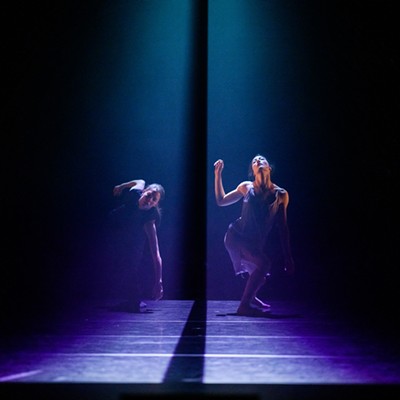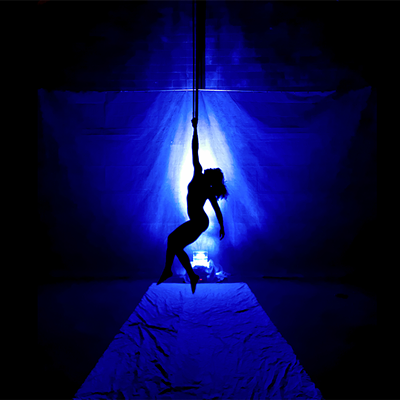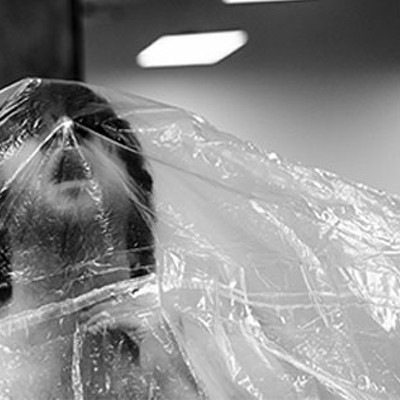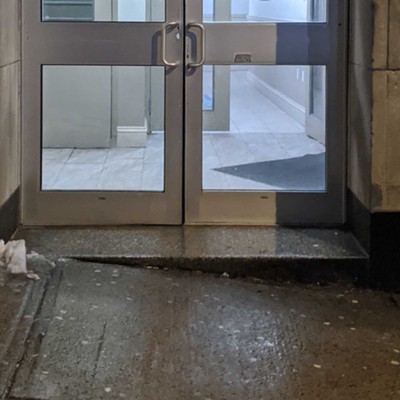It's no coincidence that Louise Bédard calls her contemporary dance work Ce qu'il en reste/What Remains (on this weekend at the Sir James Dunn Theatre) a "collage made of bodies." It was, after all, inspired by a literal collage---the kind made from cutting images out of magazines and reassembling them on paper with glue, to create new pictures.
The Montreal-based choreographer first encountered the collage-work of Hannah Hoch, a German artist who worked at the beginning of the 20th century, while flipping through a book. "I was really shocked by the way she just manipulated images," says Bédard in a delicate French accent. The first woman of the Dada art movement, Hoch was considered something of a degenerate in her time. Her works often brought together dismembered body parts to create odd new characters. Bédard was fascinated. "It's very simple," she says, "but at the same time, it takes you down some roads...some paths that talk about the social issues of the time."
That idea of collage---of cutting and pasting disassociated images to create something new---was pivotal as Bédard began to formulate a new dance work. "I wanted to be closer to the way was proceeding," she says. So, before setting any movements, Bédard created her own set of collages. By the time she was finished, she had made 60. "I got closer to her by making something from the medium that she was using," says Bédard, "I felt like I was seeing her world at that time."
When it came to translating the visual material into physical movement, Bédard, who came of age as a dance artist during Montreal's avant-garde 1980s, took a similar cut-and-paste approach. Bringing together six dancers, she started by asking them to improvise movements based on her created images. Her choreographic decisions emerged from there. The resulting work is an eclectic, dynamic dance, less concerned with storytelling than it is with purity of movement and human emotion.
The collage effect is heightened by the inclusion of other art forms. For the duration of the performance, two live musicians, Michel F. Coté and Diane Labrosse, provide on-stage accompaniment for the dancers' movements. Their abstract, computer-
created and percussive sounds provide a play-by-play soundtrack to what's happening on stage. And like the movement, which sometimes integrates improvisation, the music changes with each performance. The pages from an old dictionary provide a surprising textural backdrop and double as screens for video projections.
For Bédard, the elements are all integral to the experience of the piece. At times there is so much happening on stage that it's hard to know where to focus your attention but, she says, that's the point. "The thing about a collage is that when you look at it, each day it's going to be different, because every time you'll see different details here and there." Watching Ce qu'il en reste, Bédard says audience members experience a similar phenomenon. In deciding where to focus their attention---whether it's on one of the six dancers, on the video, or on the musicians---the audience is forced to make a choice and thus becomes engaged in the piece. At the same time, each is experiencing the work differently. "It's like life," she laughs. "There are so many ways you can look at this piece. You can look superficially, or you can look at it at a deeper level. People don't see the same thing and I like it that way."
First performed in 2005, Ce qu'il en reste continues to tour throughout Canada and internationally. The Dunn Theatre performance will be the first time Bédard's work has ever been seen in Halifax. The six dancers she's engaged for the show include Nova Scotian native, Ken Roy.
Though she hates the term accessible, Bédard says the show has been well received everywhere---and not just by people who speak the language of dance. That's because, as abstract as it may appear, it touches on so many important issues. "I think it's about the world," she says simply. "I think it's about the individual versus the collective. I think it's about violence. I think it's about poetry." Then, as if summing up every question about art that's ever been asked, she says, "I think it's about human beings." Then she laughs. "There's a lot to see."












